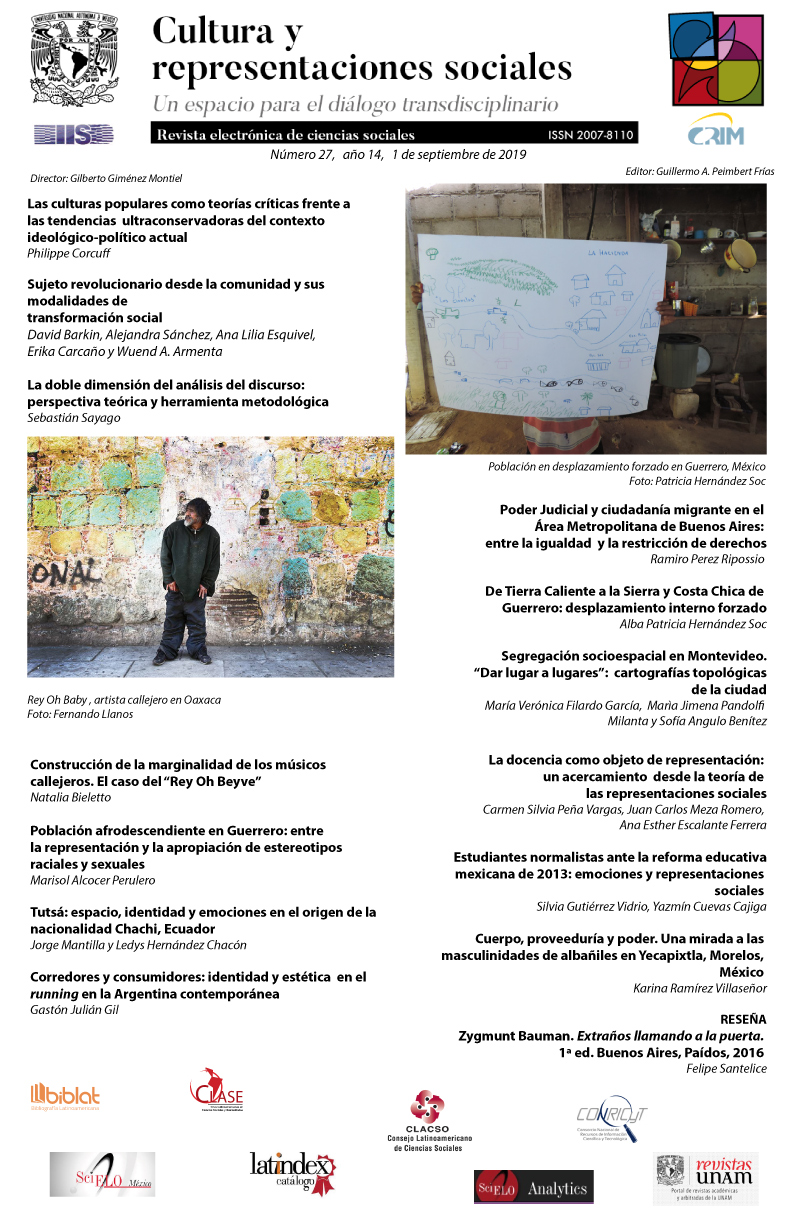Abstract
The purpose of this text is to connect two elements that frequently appear to be disconnected in urban studies: the social and the spatial. In order to link these two elements, the city’s representations — arising from its neighborhoods, a paradigmatic unit in urban studies— must articulate ways of representing the society located within. This adds complexity to the usual socio-spatial segregation measures by incorporating the implicit symbolic dimension, which is associated to the forms of representing the city and the attributes through which the neighbourhoods’ “distinctions” are enacted. These, in turn, respond to social and not merely spatial relationships. Topological cartographies are configurations that condense social and spatial representations of the city. They are specified according to the social and structural position in which the individuals are located. The discussions about the city of Montevideo arising from nine groups were used as empirical material. The analytical procedure topologizes both the urban and the social symbolic space, thus allowing the mapping of both the neighbourhoods (as territories) and the attributes assigned to them. This enabled the definition of both proximity and distances, that is, the criteria of distinction from which they approach, bring together or separate, the neighbourhoods as mentioned in the discussion groups.References
Aguiar, S. (2016) Acercamientos a la segregación urbana en Montevideo, Tesis de Doctorado en Sociología, Facultad de Ciencias Sociales, UdelaR, Montevideo.
Bourdieu, P. (1999). El efecto de lugar. En La miseria del mundo. FCE: México.
Canales, M. (2014) Escucha de la escucha. Análisis e interpretación en la investigación cualitativa. FACSO, LOM Ediciones, Chile.
Conde, F. (1987) “Un ensayo de articulación de las perspectivas cuantitativa y cualitativa en la investigación social” en Revista Española de Investigaciones Sociológicas, N51, pp 91/117, España.
Conde, F. (2004) El papel de la comparación como dispositivo de paso de la metodología cualitativa a la cuantitativa en las ciencias sociales. EMPIRIA Revista de metodología de las ciencias sociales. Nª7. 2004, pp 99-111
Criado, M. (2014) “Mentiras, inconsistencias y ambivalencias. Teoría de la acción y análisis de discurso” en Revista Internacional de Sociología, Vol. 72, n° 1, España.
Filardo, V. (2006) (coord.) Usos y apropiaciones de espacios públicos de Montevideo y clases de edad, Departamento de Sociología, Facultad de Ciencias Sociales, Universidad de la República, Montevideo, Uruguay.
Girola, M. (2013) “Procesos de heterogeneización y homogeneización socio-residencial desde una perspectiva etnográfica: reflexiones en torno a la constitución de urbanidad en una vivienda social de la ciudad de Buenos Aires” en Carman, M., Vieira da Cunha, N. y Segura, R. (Coords.) Segregación y diferencia en la ciudad. FLACSO, CLACSO, MIDV, Argentina.
Ibáñez, J. (1996) El análisis de la realidad social. Alianza, Madrid, España.
Macadar, D., Calvo JJ, Pellegrino A. y Vigorito, A. (2002) Segregación residencial en Montevideo: ¿Un fenómeno creciente?, Informe final Proyecto I+D, Comisión Sectorial de Investigación Científica, Universidad de la República, Montevideo.
Rizo, M. (2006) “Conceptos para pensar lo urbano el abordaje de la ciudad desde la identidad, el habitus y las representaciones sociales” en Revista Bifurcaciones, N° 6, pp. 1-13, Chile.
Schelotto, Salvador (2008) La ciudad de Montevideo ¿Una metrópoli policéntrica? En Centro-h, Revista de la Organización Latinoamericana y del Caribe de Centros Históricos No. 2, diciembre 2008, pp. 37-46 © OLACCHI • I S S N: 1 3 9 0 - 4 3 6 1

This work is licensed under a Creative Commons Attribution 4.0 International License.
Copyright (c) 2019 Verónica Filardo, Jimena Pandolfi, Sofía Angulo Benítez



